Are you looking to start keeping chickens in your backyard? There are a number of breeds that are the best laying hens for beginners. Some chicken breeds are great for meat production while others are highly productive layers. If you’re wondering which breeds of chickens to try you’ve come to the right place.
When I started raising hens, I had a small flock of just a few Isa Browns, but I’ve since branched out to a multi-colored flock of different breeds. They keep me and my family in eggs of all different colors and sizes. Let me give you a rundown of some of the most popular breeds.
When you become familiar with the type of care each breed needs, and how many eggs they’re likely to produce you can make the best choice for your backyard or coop. Some chickens do better free-ranging around the yard while others don’t mind being cooped up (literally!).
Best Laying Chickens Chart
Breed | Main Use | Egg Facts | Annually Production |
Isa Browns | Egg | Medium | 300+ |
Leghorn | Egg, Meat | Medium and White | 280-320 |
Plymouth Rock | Egg, Meat | Large | 200-250 |
Rhode Island Red | Egg, Meat | Extra Large and Brown | 250-300 |
Sussex | Egg, Meat | Large and light Brown | 200-250 |
Austrolorp Chickens | Egg, Meat | Large and light Brown | 250-300 |
Wyandotte | Egg | brown or tinted | 200+ |
Ameraucana | Show | Medium and Light Blue in color | 170-180 |
Best chicken breeds for eggs
1. Isa Browns

- Main Use: Egg Production
- Weight: 2-3 kg
- Egg Production: 300+ Eggs Average Annually
- Egg Color: Light brown
- Egg Size: Medium
Isa Browns are the true workhorse of the egg laying world. You’ll love them because of their traditional reddish-brown feathers, but also because they can lay between 300-350 eggs every year! These big birds are robust and are known to thrive in typical chicken coop environments.
Isa Brown chickens make great laying hens for beginners because they are content to live in most climates, so they’ll be happy wherever you are. Because they’ve been bred for egg production, they have a gentle nature which helps when it comes to sharing space with the flock.
If you want to do your bit for battery farm hens, there are often options for backyard chicken farmers to adopt Isa Browns that are past their egg laying prime from commercial operations. They’ll still give you plenty of eggs and you’ll have a good feeling for giving the girls some fresh air and affection. Read more about Isa Brown.
2. Leghorn
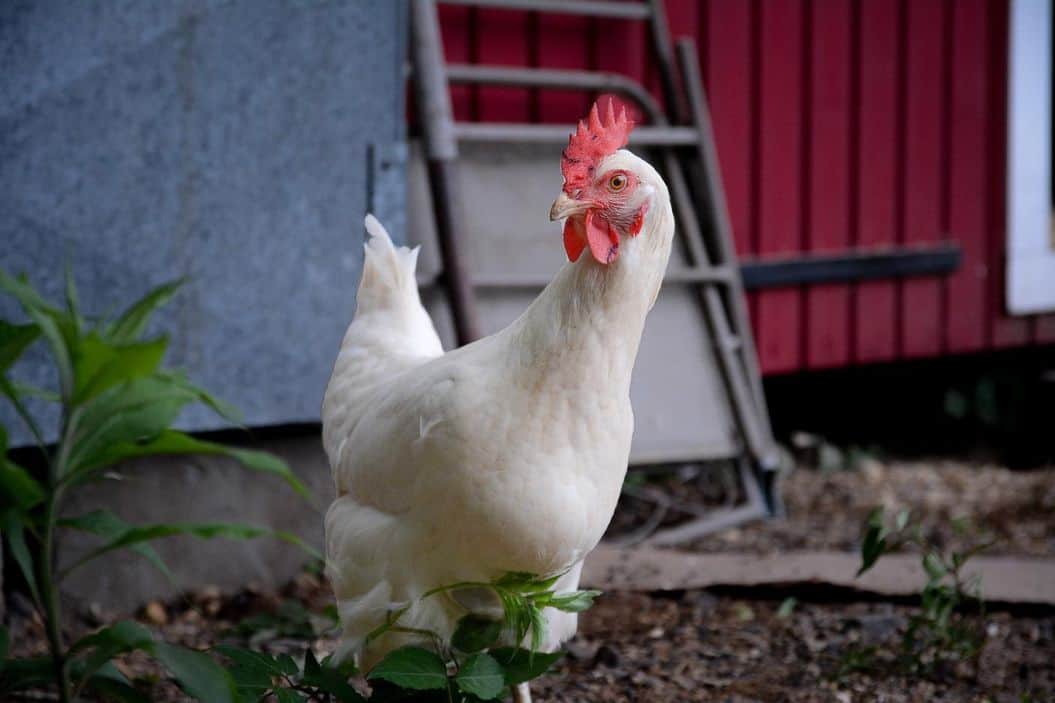
- Main Use: Egg Production / Meat Production
- Weight: 2-3kg
- Egg Production: 280-320
- Egg Color: White
- Egg Size: Medium
Leghorn chickens would be an eye-catching addition to your flock. The bright red comb and shiny white feathers are a cheery sight. If you keep your eyes open you can find them with different plumage colors, too. The white birds are known to produce the most eggs.
They’re also great for beginners because they are easy to look after, give 280-320 eggs a year and are a slightly smaller bird. Originally bred in Petaluma California, these girls will give you the all-American dream of fresh eggs almost every day.
Leghorns are also great hens for beginners as they are very unlikely to go broody. This means they won’t sit on a clutch of eggs and stop laying. This genetic quirk helps to maintain egg production throughout the year. Read more about Leghorn Chicken.
3. Plymouth Rock
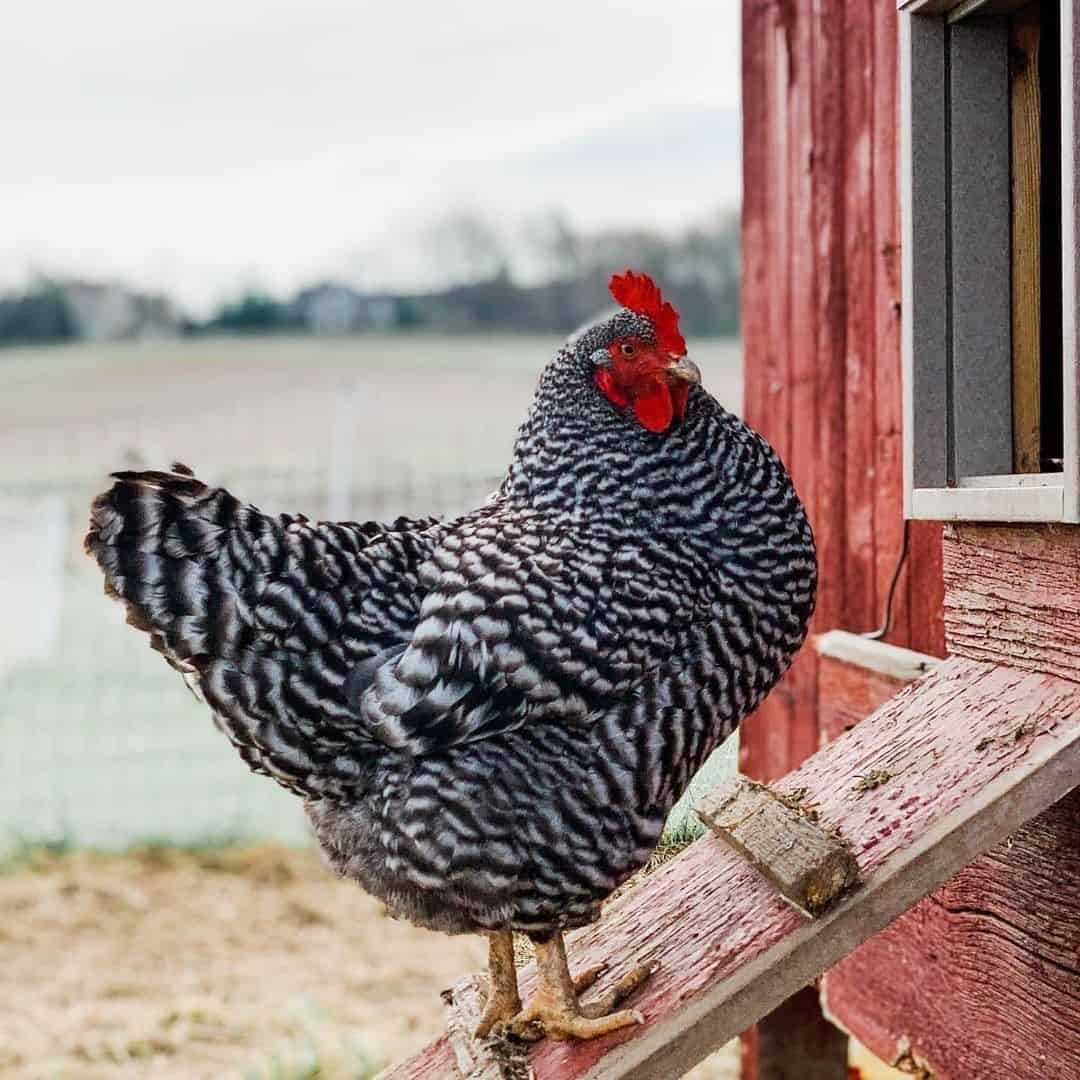
- Main Use: Egg Production / Meat Production
- Weight: 3-4kg
- Egg Production: 200-250
- Egg Color: Brown
- Egg Size: Large
The Plymouth Rock breed of chicken is a great laying hen for beginners. Another American breed, these girls are renowned for being able to lay through the winter, unlike many other types of chickens. If you keep Plymouths, you can expect around 200-250 eggs per bird per year.
These birds weren’t held in high regard when they were first bred but don’t let that put you off. They come in a variety of colors these days, and you’ll be sure to love the blue and black-feathered varieties.
If you have children, Plymouth Rock chickens are a perfect addition to your backyard. They are known to be gentle and patient birds, perfect for pats and cuddles.
Remember that scared or nervous birds often stop laying. Unlike other chicken breeds, Plymouth Rocks are far less likely to startle or go into shock if you have other pets. Read more about Plymouth Rock.
4. Rhode Island Red

- Main Use: Egg Production / Meat Production
- Weight: 3-4 kg
- Egg Production: 250-300
- Egg Color: Brown
- Egg Size: Extra Large
Hailing from yep you guessed it – Rhode Island, these birds are ready and willing to give you plenty of large eggs for your breakfasts. They’re known to give between 250-300 eggs per year.
Backyard chicken farmers love Rhode Island Reds because like Plymouths, they are known to be easy-going and child-friendly. Their large size and eye-catching russet plumage are not their only good qualities. They’re also strong and healthy birds who are likely to lay through all types of weather conditions.
Rhode Island Red chickens have been bred to be hardy stock – they are naturally quite disease resistant, which will help you to maintain egg production throughout the year and avoid costly vet bills or treatments.
If you choose to keep Rhode Island Reds, then make sure you have plenty of room for them to roam. They are hungry birds that love to forage for bugs, mice and other backyard critters to eat. Keep them busy by adding chicken-sized distractions in their coop if they need to be locked up during the day. Read more about Rhode Island Red.
5. Sussex
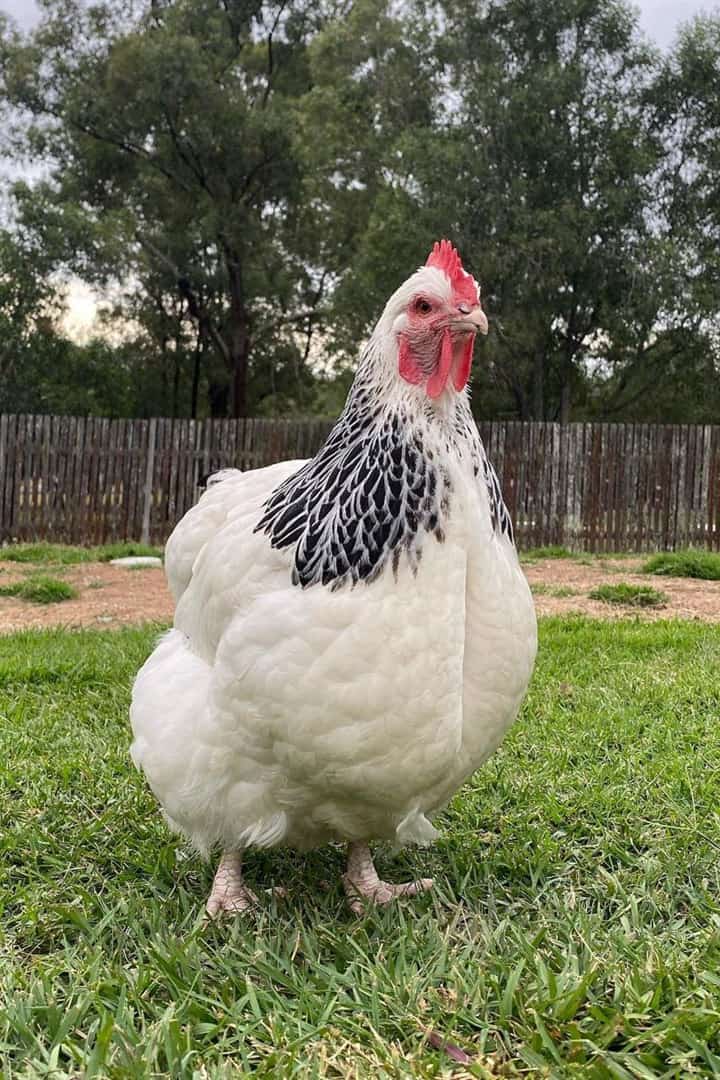
- Main Use: Egg Production / Meat Production
- Weight: 3-4 kg
- Egg Production: 200-250
- Egg Color: Light Brown
- Egg Size: Large
If you’re interested in Sussex chickens, you might like to keep some in your flock. The breed nearly died out in the early 1900s, but one dedicated farmer kept the lineage going.
I love Sussex hens because they are just beautiful to watch. Their dappled feathers, dark tails and almost stripy necks are so much fun. They are confident birds that will be very happy to explore your backyard.
Sussex hens are a medium size birds and can produce around 250-300 eggs per year. They’ve also been bred as meat birds, so if you’re inclined you can eat them when they start declining in egg production. Read more about Sussex Chicken.
6. Austrolorp
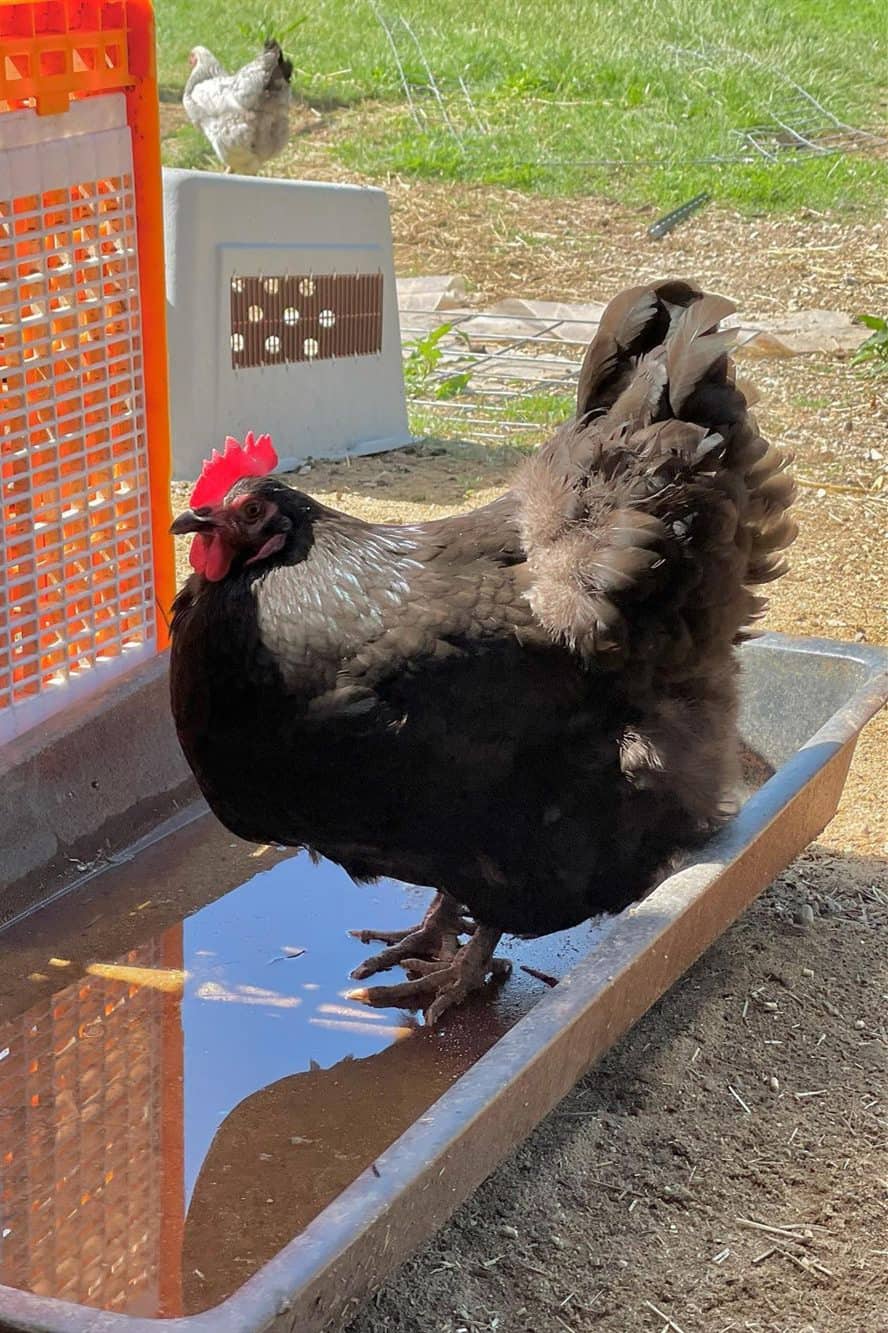
- Main Use: Egg Production / Meat Production
- Weight: 3-4 kg
- Egg Production: 250-300
- Egg Color: Light Brown
- Egg Size: Large
Austrolorp chickens come from Australia, where they were bred from Orpington stock. If your family likes plenty of eggs, this is a breed to consider. They can lay up to 250-300 eggs a year – yes an all seasons layer. Most chickens stop laying during the colder months but not the Austrolorp.
Austrolorps come in blue, black and white and start laying relatively early in life when compared to other hen breeds. These are perfect free-range backyard birds. They produce more eggs if left to explore and forage for greenery and grubs. You won’t have to worry about them flying off as they are almost flightless. Read more about Austrolorp Chicken.
7. Wyandotte
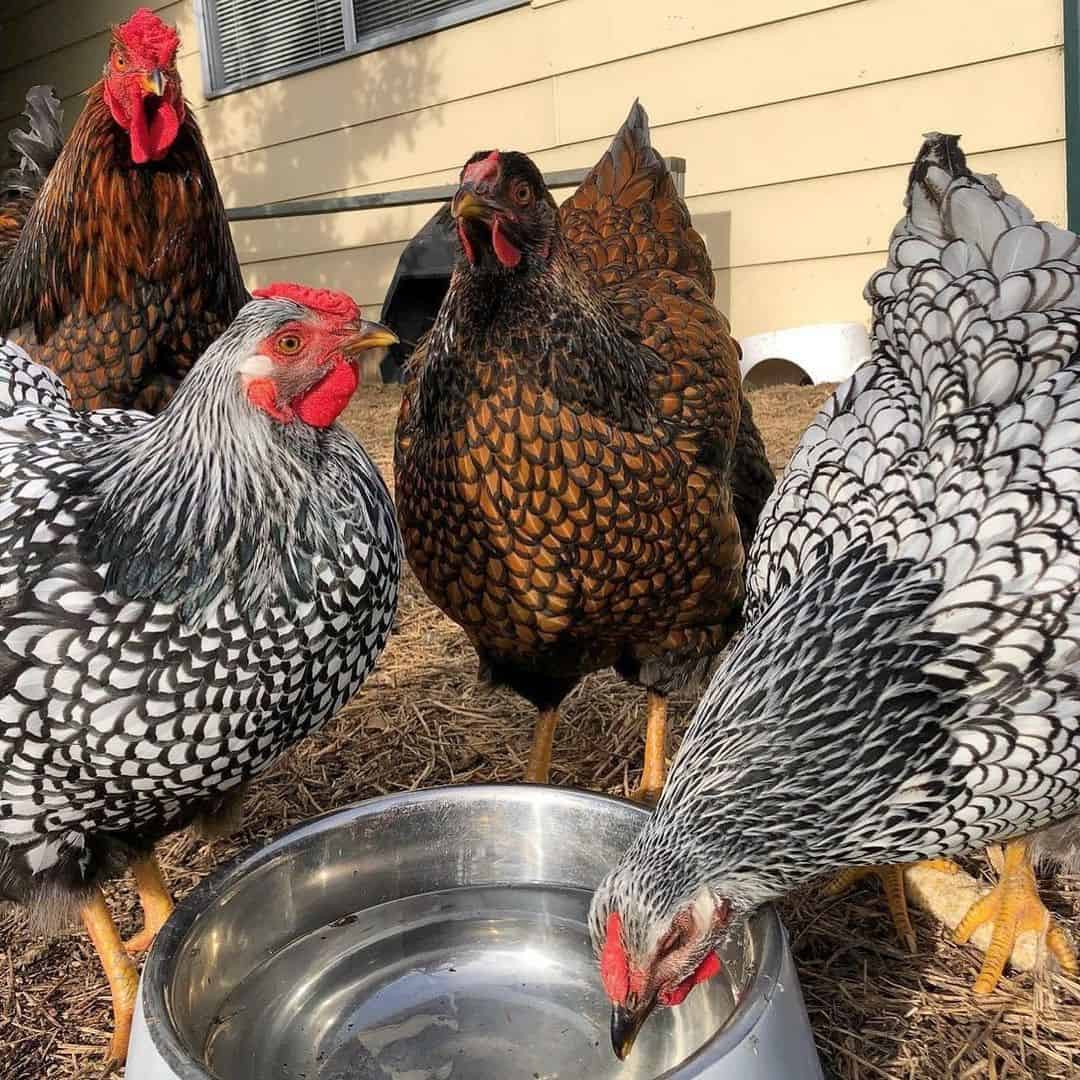
- Main Use: Egg Production
- Weight: 2.7-3.8 kg
- Egg Production: 200+
- Egg Color: Brown or Tinted
- Egg Size: lARGE
Wyandotte (wine-dot) chickens are the darling of the poultry show circuit. While they lay fewer eggs than some other breeds of hen, Wyandottes are simply stunning birds to look at. While they come in many varieties, I can’t go past the deep brown feathers edged with deep black tips.
Wyandottes are very hardy birds. They may not be suited to households with curious children, but they are very strong and live happily without much fuss. Read more about Wyandotte Chicken.
8. Ameraucana or Araucana
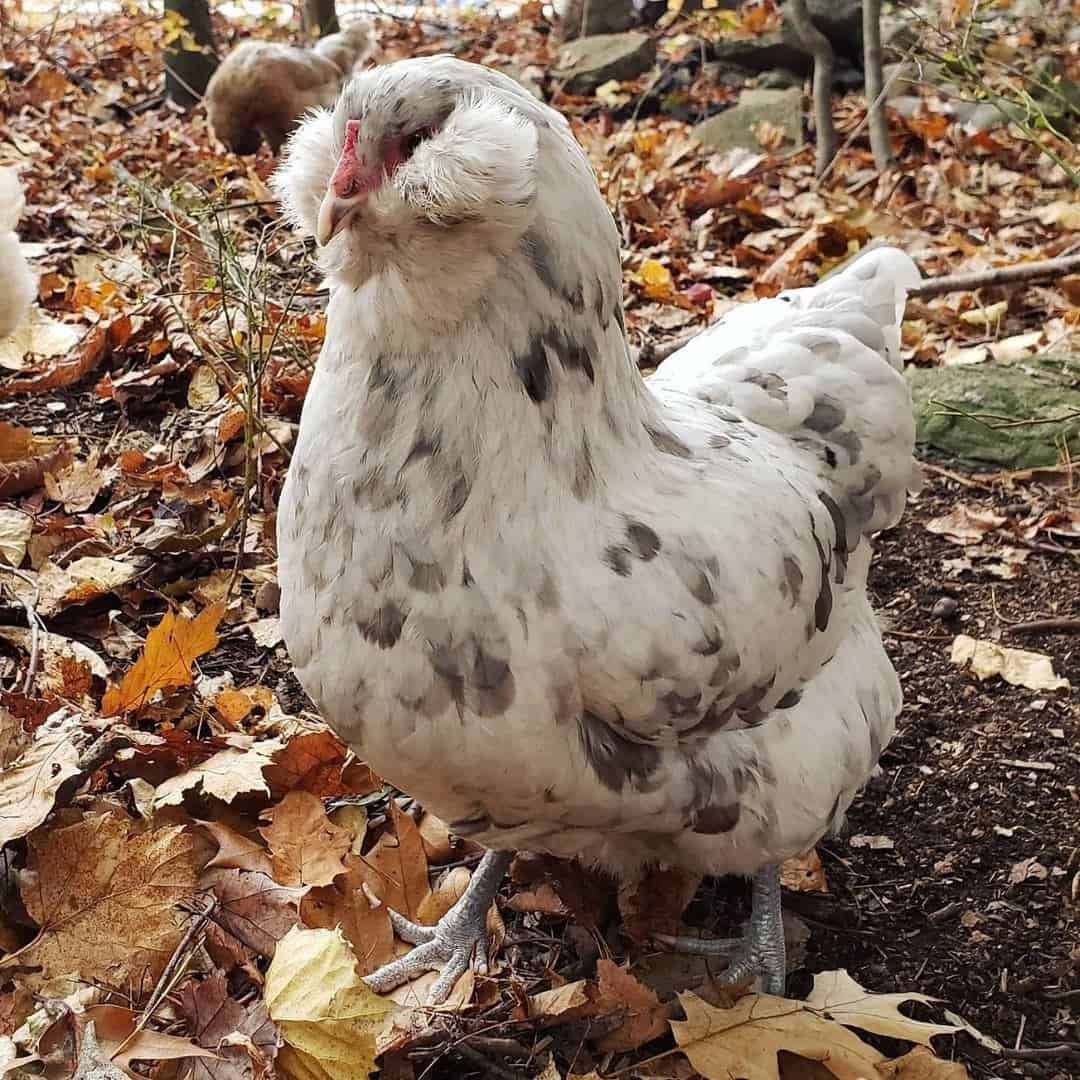
- Main Use: Show
- Weight:2.5–2.9 kg
- Egg Production: 170-180
- Egg Color: Light Blue in color
- Egg Size: Medium
If you’d like to see some color in your egg basket, you can’t go past Ameraucana chickens. While Ameraucanas are sometimes confused with Araucanas (named for the Araucanian Indians in Chile, where this breed originates), both breeds are known for laying blue and green eggs.
They lay far fewer, and smaller eggs than other breeds on this list, only around 170-180 per year, but the unusual color makes up for it. It’s fun to discover these little ‘easter eggs’ in the nesting boxes.
If you’re watching your cholesterol, you’ll be pleased to know Ameraucana eggs are naturally lower in cholesterol than other eggs. This quality also gives their eggs an attractive selling point. If you have an abundance of eggs or have a mind for business, these heart-healthy eggs have the potential to turn a tidy profit. Read more about Araucana Chicken.
9. Bantams
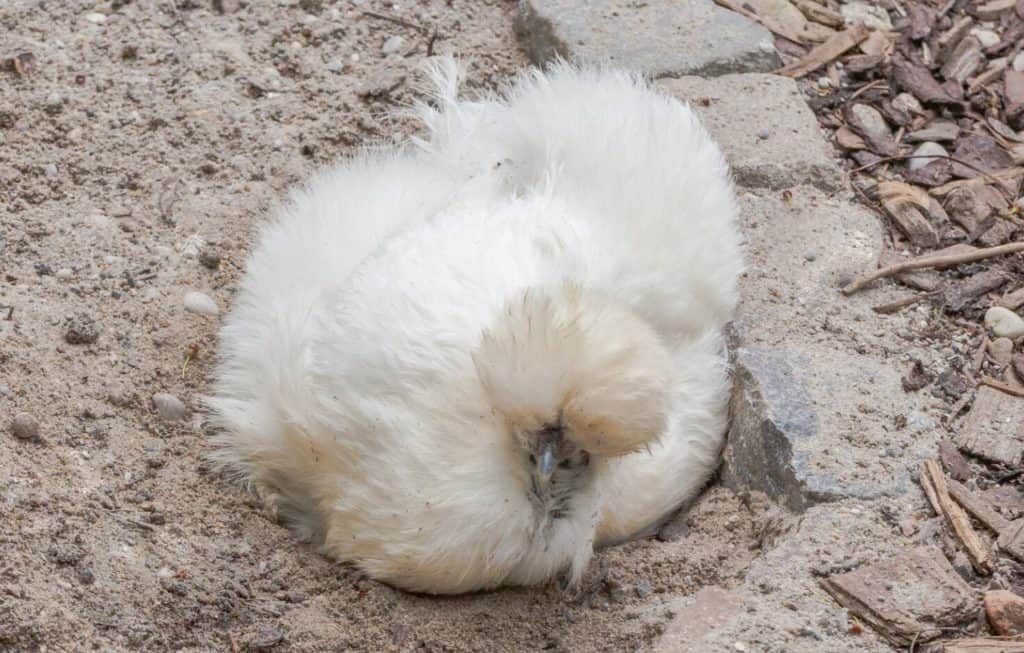
I’m cheating a bit here, as there are many different breeds of Bantam hen. Some are true Bantams while others have been cross bred with other breeds like Plymouth Rocks. They are small birds which makes them perfect for backyards or other small areas.
They lay cute little eggs, and don’t like to be kept in cool or wet climates. I’m including them because they are a delight to look at. The Silkie Bantams in particular are known for soft tufted feathers around their feet and often on their head as well. Read more about Bantam Chicken.
Wrap up
Here’s my list of the best laying hens for beginners:
- Isa Browns: sturdy, highly productive egg layers
- Leghorns: traditional, unlikely to go broody
- Sussex: pretty, eye-catching birds that are dual use
- Plymouth Rocks: very child and pet friendly
- Austrolorp: Australian birds known to lay all year round
- Rhode Island Reds: naturally disease resistant, loves to roam
- Wyandotte: show hens, unsuited to curious children or active pets
- Ameraucana: gives fewer eggs but provides a glorious blue eggshell
- Bantams: fun to watch, tiny eggs
When you’re just starting out, it is easier to choose just one breed of laying hen to begin with. You can get to know the peculiarities and preferences of the flock. It’s a good idea to get to know the laying rhythms and habits of one breed at a time, so you can better understand their needs and adjust your care accordingly.
As you grow in confidence you can start branching out and diversifying your flock. Which breeds of laying hen are you interested in keeping? What’s more important to you: plentiful large eggs, a friendly demeanor or bright, colorful shells? Let me know in the comments below.


Joseph Hudson has been raising chickens for over 15 years. In 2018, he completed the Agriculture & Natural Resources program at Mt. San Antonio College. He currently raises over 1400 chickens on his 7.5-hectare farm. He keeps sharing his experience on raising healthy and happy chickens on Chicken Scratch The Foundry.
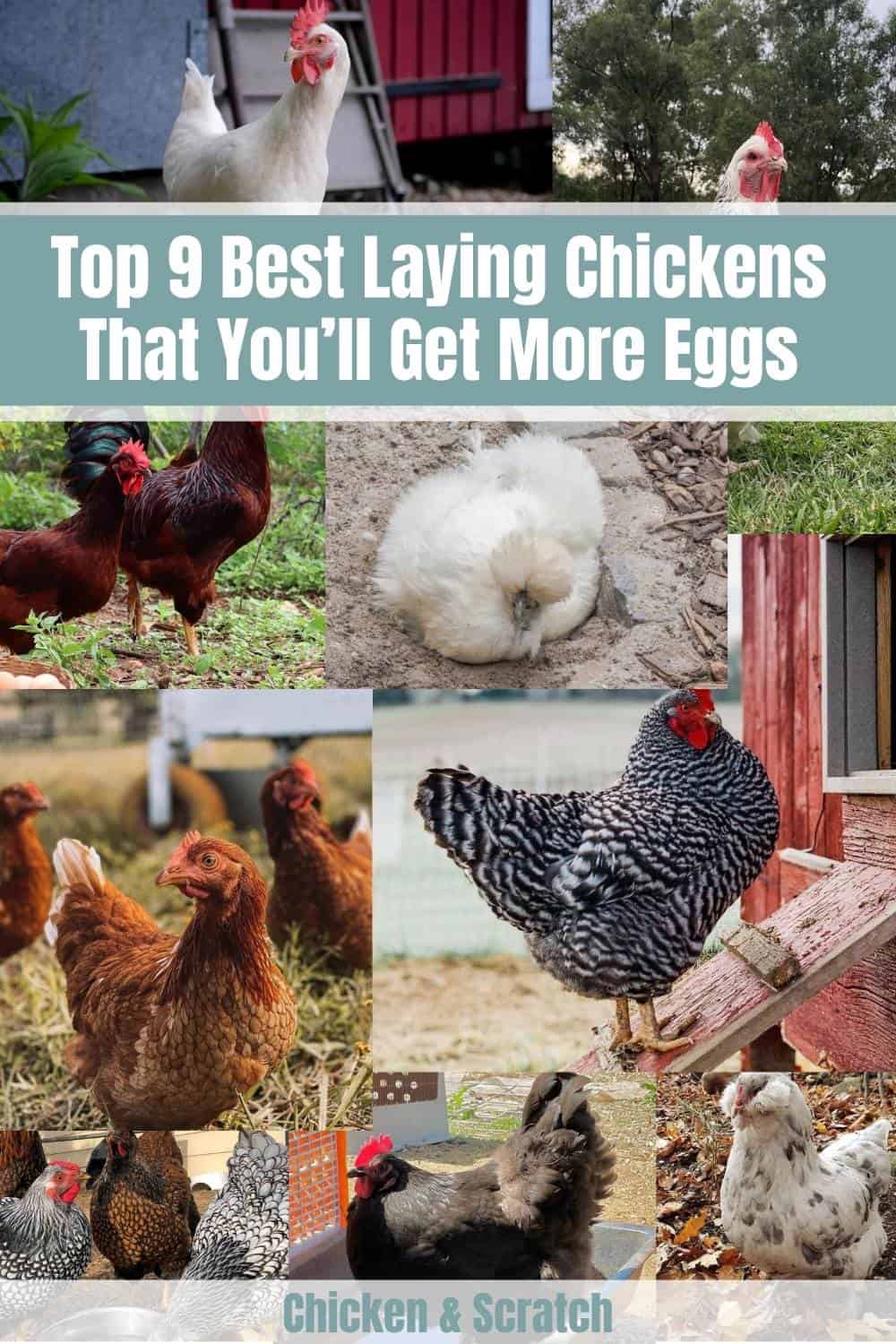








I want to updated on this chickens
The poor isa breowns can’t hold a candle next to the pearl white leghorns, especially those of the hy-line company. Leghorns have the best feed to egg conversion ratio by far.
Quiero comprar chicken Arcansas blue.?Donde puedo hacerlo?
Hello CS,
If I was raising industrially near the equator but tropics like philippines , what would you recomend in terms of productions , efficiency and number of years productivity . And most leaner in broodness to fit more chickens in an industrial laying cages , because I do understand that these layers have to be pretty close and cuddly with each other to retain certain heat to be more productive .
Please tell me with your calculation and experience , but I am interested in a semi brownish eggs because I’m in the tropics … please tell me your plural proper considerations… I really kindly humbly would appreciate you . Thank you .
Contact me at WhatsApp +12014174157 or [email protected] , my name is ESES55Helloookakaroo. Let’s talk seriously . I’m pretty kindBuddz . Haha. Thank you .
I am looking for blue chickens for my granddaughter for Easter . She is just 6 years old. What breed would you suggest best for her . We live in Goomborian SE Qld Australia – sub tropical zone .
Cheers
Shirley
First, one of the Leghorn strains from ISA, Shaver, HyLine or one of the other chicken genetics companies will lay rings around an ISA /Brown. For one thing, white egg layers by definition have better feed conversion, all other things being even, since the pigment on a brown egg is made of pigment, and pigment requires protein.
Second, Americauna/Aracauna eggs are NOT lower in cholesterol, and the idea that their egg are lower in cholesterol is a myth that has been in circulation for decades.